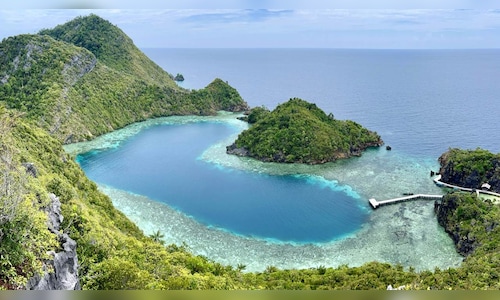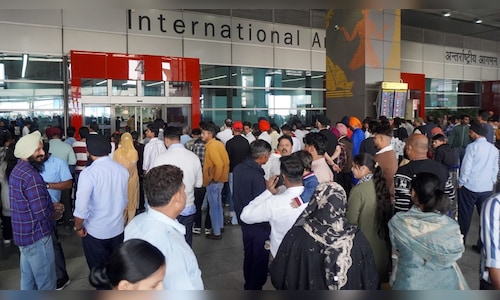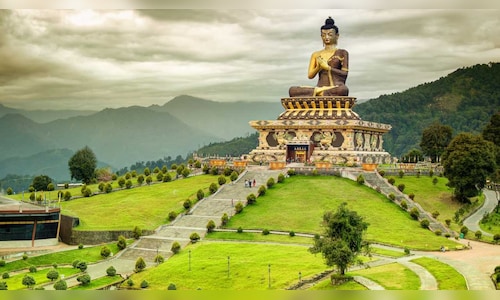Some 1,600 kilometers (990 miles) away in Bali — not that there’s any direct flight — traffic snarls around temple corners, the air is thick with noise pollution from motorbikes, plastic trash is matted into gutters and the surge of visitors has, in many places, eclipsed the island’s deeper spiritual essence.
And yet, that’s where the government is placing most of its tourism bets. Officials want Bali, about 1.5 times the size of Rhode Island, to be a holiday escape and everything else besides. There are plans to establish Bali as a family office hub, an export center for seaweed and President Prabowo Subianto in late June inaugurated the Sanur Special Economic Zone to develop medical tourism.
Also read | 19,000 km, 21 days and 13 countries: 8 facts to know about the world’s longest train journey
As Indonesia’s most internationally recognized destination, banking on Bali was a deliberate strategy to help the Southeast Asian nation’s vital tourism sector recover in the aftermath of the pandemic. But that approach isn’t paying off, with the province’s economic growth slowing as visitors’ spending declines.
Meanwhile, tourism operators in other parts of the country are crying out for investment.
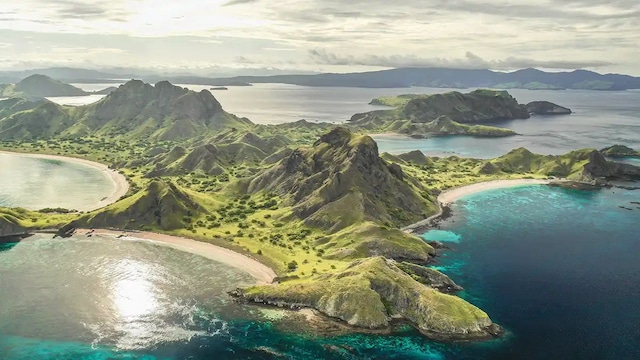
Komodo Island is Home to around 2,000 residents and the iconic Komodo dragon — the world’s largest lizard — Komodo Island is a unique blend of danger and beauty. This 390 square kilometer island is part of Indonesia’s string of volcanic isles.
Irfan Muddin, who has run Ora Sunrise View Resort since 2018, has been lobbying local authorities for years to improve connectivity to boost tourism in Maluku province. “An airport could be built on Seram Island that would enable direct domestic and international flights,” he said, adding that regional airfares should also come down.
Also read | Spain unveils digital nomad visa for ₹8,000: Here’s how Indian passport holders can apply
Tourism in Indonesia — an archipelago of more than 17,000 islands — as a whole still hasn’t fully returned to pre-Covid levels, a milestone that Vietnam and Thailand are close to achieving. Bali itself however is suffering from overtourism, with visitor numbers in 2024 already exceeding those in 2019.
“Is Indonesia squandering its tourism potential? In many ways, yes, but not because it lacks natural beauty,” Samer El Hajjar, a senior lecturer in marketing at Singapore’s NUS Business School, said. “It’s more about execution. There’s a gap between potential and policy, between what Indonesia could offer and what it currently does.”
A major obstacle in boosting tourism spots besides Bali is the lack of coordination among ministries and local government to ramp up infrastructure and improve connectivity. Indonesia’s government has previously tried to prioritize creating 10 “new Balis” in other areas, but these projects have quietly fallen by the wayside.
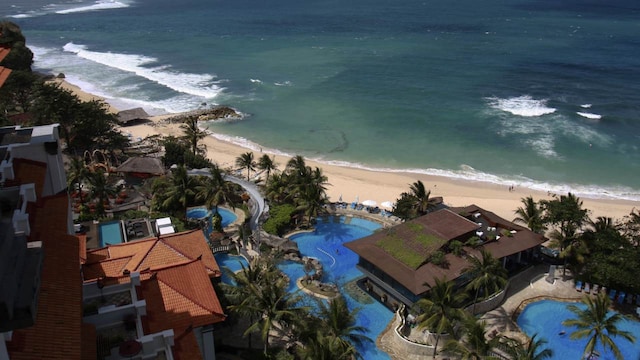
Indonesian paradise Bali is known for its stunning beaches, vibrant culture, and lush landscapes. Visitors can discover the beautiful beaches of Seminyak, Nusa Dua, and Kuta, visit the famous Uluwatu Temple, watch traditional dance performances, and indulge in delicious seafood. (Image: Reuters)
Indonesian Tourism Minister Widiyanti Putri Wardhana said in a statement that the government is still pushing ahead with the “new Balis” strategy and is improving connectivity by upgrading infrastructure. The country is working with global tour agents and operators to promote key destinations, she said. Indonesia is also focused on diversifying its economy so it doesn’t become dependent on tourism, she said.
Also read | Maldives to grant 90-day visa-free entry to Sri Lankan tourists
After a slump during the height of Covid, the reopening of borders saw visitors flock to Bali, which garnered pop-culture status after being featured in the 2010 film Eat, Pray, Love. In 2024, nearly half of Indonesia’s roughly 13.9 million foreign visitors went to the province.
From a quiet, agrarian, Hindu oasis, Bali has transformed into a nightlife hotspot that offers both ultimate luxury — whole villas that run close to $3,000 a night — to budget basics, with guest houses that go for as little as $20.
It’s also become a mecca for wellness enthusiasts and is attempting to become a medical hub that offers cosmetic procedures to neonatal care. The government estimates that the island’s two economic zones, one focused specifically around medical tourism, could bring in over $33 billion by 2052.

Indonesian Tourism Minister Widiyanti Putri Wardhana said in a statement that the government is still pushing ahead with the “new Balis” strategy and is improving connectivity by upgrading infrastructure. The country is working with global tour agents and operators to promote key destinations, she said. Indonesia is also focused on diversifying its economy so it doesn’t become dependent on tourism, she said.
But the tourism boom isn’t translating into sustained gains.
Bali’s economic growth declined to 5.5% last year from 5.7% in 2023, in part due to a decline in average spending of international tourists. Typically deep-pocketed Chinese have been particularly missed, with the number of visitors from the country just a third of 2019’s level. In essence, Bali is a victim of its own success.
Crowds of tourists throng streets and videos of snarling traffic in party hot spots such as Canggu have gone viral, prompting comparisons to Indonesia’s capital Jakarta, notorious for its jammed roads. Foreign investors building villas are eating into the tranquility of the terraced paddy fields that helped make Bali famous in the first place.
Life has changed substantially for locals too. Construction work threatens the delicate structures of the island’s sacred Hindu temples and water is getting harder to come by — over 65% of Bali’s fresh water is channeled to resorts and plunge pools, leading to over-extraction as villages turn to using groundwater.
Over at Ora Beach in Maluku province, a stream of what looks like dark black smoke arises from the mountains at 6:20 p.m. on the dot, everyday. It’s actually thousands of bats flying out of a nearby cave to hunt for their dinner. As visitors go island hopping, they can catch a view of dolphins and turtles coming up from the deep for air.
But what Bali has that Seram Island lacks is infrastructure and connectivity.
The island doesn’t have an airport, for instance. One way to get to Ora Beach is to fly three and a half hours east from Jakarta to Ambon, take a two hour ferry to Seram Island and then another one hour car ride — a close to seven hour trip. Even then, there are only two ferry services a day, which carry more people than the maximum allowed limit. Sinkings in Indonesia are commonplace.
Also read | Busiest international flight routes of 2025: Do you know which one tops the list?
Similarly, there are no international flights to Lake Toba, the largest volcanic lake in the world. From Samosir Island, visitors can take in views of the lake and the surrounding hills. Although some hotels have sprouted and Lake Toba will host the F1H2O Powerboat World Championship in late August, tourism development is still slow.
Another untapped gem is Raja Ampat, located off the northwest tip of Papua. Its more than 1,500 cays and shoals are widely recognized as hosting the world’s most diverse coral reef ecosystem. Again, there are no international flights.

Located near the popular tourist destination of Bali, the Indonesian island is famed for its unexplored beaches and scenic beauty. It also offers a wide variety of options to adventure enthusiasts.
Still, there have been some efforts. As part of Widodo’s huge infrastructure spending spree, airports were upgraded or new ones built. The airfield on Labuan Bajo, near where Komodo dragons can be found, was expanded in 2022 and last year, international flights from Malaysia and Singapore were added. Cafes and restaurants that wouldn’t look out of place in Bali have mushroomed. The number of tourists in 2024 was triple 2016.
It’s not just a short-term challenge. The opportunity cost of not sustainably developing tourism in remote destinations could increase each year, with competition for tourist dollars intensifying both domestically and with neighboring countries, said Lavanya Venkateswaran, senior ASEAN economist at Oversea-Chinese Banking Corp.
Indonesia already lags regional competitors like Thailand, where tourists have several beach options from Phuket to Koh Samui and Krabi. Vietnam, also much smaller geographically, boasts comparatively a lot of holiday alternatives such as Ha Long Bay and Sa Pa in the north to Phu Quoc, which is undergoing a major infrastructure and tourism transformation ahead of hosting APEC 2027, including an augmented airport designed to handle 50 million passengers by 2050.
“To truly compete, Indonesia needs to act more like a tourism federation, empowering provinces and building unique destinations within the national umbrella,” El Hajjar said. “The potential is there. What’s needed is stronger political will, better coordination and a tourism mindset that treats the country not as one place but as a constellation of remarkable experiences waiting to be discovered.”


